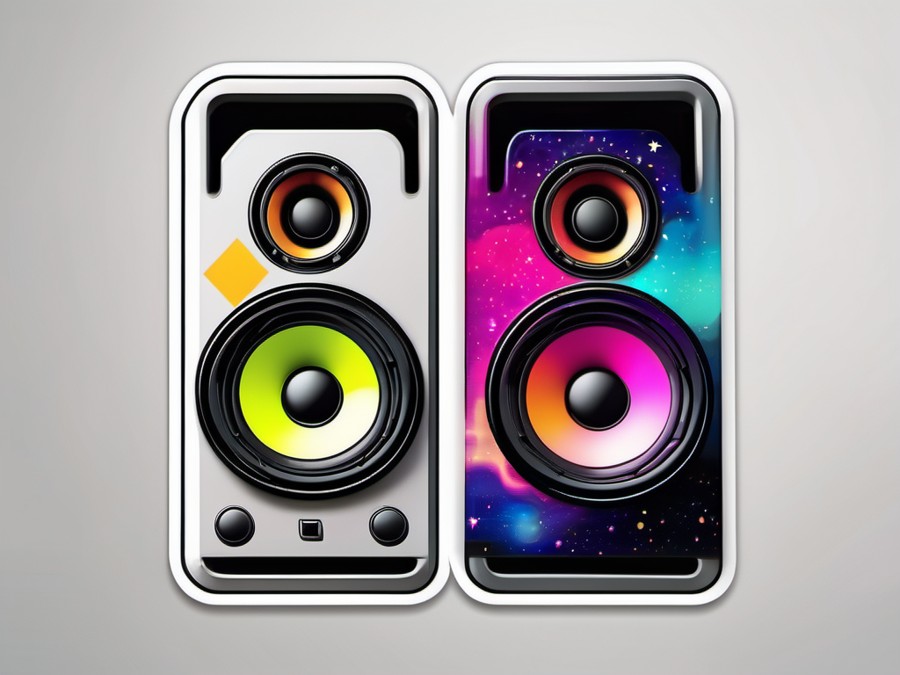· Charlotte Will · Bookshelf Speakers · 7 min read
What is the difference between bookshelf speakers and floor-standing speakers?
Discover the key differences between bookshelf speakers and floor-standing speakers, including size, sound quality, power handling, and ideal use cases. Learn which type of speaker is best for your home setup and audio preferences.

Welcome to the fascinating world of speakers! Today, we’re going to dive into the differences between bookshelf speakers and floor-standing speakers. Both types of speakers have their unique qualities, and understanding these differences can help you make a more informed decision when setting up your audio system.
Introduction to Bookshelf and Floor-Standing Speakers
What Are Bookshelf Speakers?
Bookshelf speakers, also known as stand-mount or compact speakers, are designed to fit on a bookshelf, tabletop, or wall-mounted bracket. They are small and lightweight, making them versatile for various placements in your room. Bookshelf speakers are often used in stereo setups or as part of a home theatre system, especially in smaller rooms.
What Are Floor-Standing Speakers?
Floor-standing speakers, also called tower or column speakers, are tall and robust, designed to stand on the floor. They often come with built-in stands or can be placed directly onto the floor. These speakers are known for their powerful performance and are typically used in larger rooms or home theatre setups.
Understanding the Key Differences
Cabinet Design and Size
The primary difference between bookshelf and floor-standing speakers lies in their cabinet design and size. Bookshelf speakers have a compact design, usually measuring less than 12 inches tall and often around 6-8 inches wide. In contrast, floor-standing speakers can be quite tall, sometimes exceeding 40 inches in height, and a bit wider to accommodate larger drivers.
Drivers and Frequency Range
The number and types of drivers used in speakers also set them apart. Bookshelf speakers often have a combination of tweeters (for high frequencies) and mid-range drivers, with some models including small woofers for low frequencies. On the other hand, floor-standing speakers typically have more robust drivers, including larger woofers or subwoofers for better bass performance.
Bass Response and Performance
When it comes to bass response, floor-standing speakers generally outperform bookshelf speakers. Their larger cabinet volume and more powerful drivers help produce deeper and more impactful bass. However, bookshelf speakers can still deliver respectable bass performance for their size, especially with the help of passive radiator technology.
Sound Quality and Performance
Soundstage and Imaging
The soundstage and imaging differences between bookshelf and floor-standing speakers can be subtle but noticeable. Bookshelf speakers often provide a more focused and intimate listening experience, ideal for solo listening or small groups. In contrast, floor-standing speakers can create a wider and more immersive soundstage, perfect for larger rooms and home theatre setups.
Power Handling and Volume Capabilities
In terms of power handling and volume capabilities, floor-standing speakers typically have the edge. Their larger drivers allow for higher decibel levels (dB) and more robust sound. However, bookshelf speakers can still provide impressive volume for their size, making them suitable for smaller rooms or near-field listening.
Sensitivity and Efficiency
Understanding speaker sensitivity is crucial when comparing bookshelf and floor-standing speakers. Sensitivity is measured in decibels per watt per meter (dB/W/m) and indicates how efficiently a speaker converts power into sound. Generally, floor-standing speakers have higher sensitivity ratings than bookshelf speakers, making them more efficient and better suited for larger rooms.
Placement Considerations and Flexibility
Mounting and Placement Options
Bookshelf speakers offer more placement flexibility. They can be mounted on walls, placed on stands, or even shelved. This versatility makes them suitable for various room layouts and decor styles. Floor-standing speakers, while less flexible in placement, can still be positioned strategically to optimize sound distribution.
Versatility in Home Theatre Setups
Both bookshelf and floor-standing speakers have their places in home theatre setups. Bookshelf speakers can serve as satellite or surround speakers, providing crisp dialogue and sound effects. Floor-standing speakers are often used as front channels or centre channel speakers, delivering powerful and immersive audio.
Aesthetics and Design Elements
Visual Appeal and Blending with Decor
The aesthetics of speakers play a significant role in their appeal. Bookshelf speakers are designed to be discreet and blend with your decor, making them an excellent choice for living rooms or offices. Floor-standing speakers, on the other hand, often serve as statement pieces due to their size and design, adding a touch of elegance or modernity to your space.
Finishes and Colour Options
Speakers come in a variety of finishes and colours. Bookshelf speakers usually offer options like black, white, or wood finishes to match different decors. Floor-standing speakers often come in similar finishes but may also include more exotic options like glossy black or metallic accents.
Practical Considerations and Costs
Power Requirements and Amplifier Needs
The power requirements of speakers also differ. Bookshelf speakers typically require less power, making them suitable for use with smaller amplifiers or AV receivers. Floor-standing speakers, with their larger drivers and higher power handling capabilities, may require more robust amplification.
Budget and Price Points
When it comes to budget, both bookshelf and floor-standing speakers have options across various price points. Entry-level bookshelf speakers can be quite affordable, making them an excellent choice for budget-conscious audiophiles. High-end floor-standing speakers, with their advanced technology and premium materials, can command higher prices but offer superior performance.
Real-World Examples and Scenarios
Bookshelf Speakers in Small to Medium Rooms
For those with smaller rooms or who prefer a more intimate listening experience, bookshelf speakers are an ideal choice. Their compact size and focused soundstage make them perfect for solo listening, small groups, or near-field use.
Floor-Standing Speakers in Larger Spaces
In larger rooms or home theatre setups, floor-standing speakers shine. Their powerful performance and wide soundstage create an immersive audio experience, ideal for movies, music, or gaming.
Conclusion
Understanding the differences between bookshelf and floor-standing speakers can help you make a more informed decision when setting up your audio system. Bookshelf speakers offer versatility, compact design, and focused sound, while floor-standing speakers provide powerful performance, wide soundstage, and aesthetic appeal. Consider your room size, budget, and personal preferences when choosing between these two types of speakers.
FAQs: Addressing Common Questions
FAQ 1: Can bookshelf speakers be used as front channels in a home theatre setup?
Yes, bookshelf speakers can be used as front channels in a home theatre setup. While they may not provide the same level of bass as floor-standing speakers, their focused soundstage and crisp dialogue reproduction make them a good choice for smaller rooms or near-field listening.
FAQ 2: Are floor-standing speakers always better for bass performance?
Floor-standing speakers typically offer better bass performance due to their larger cabinet volume and more powerful drivers. However, some high-end bookshelf speakers with advanced technologies like passive radiators can also deliver impressive bass performance.
FAQ 3: What room size is best suited for bookshelf speakers?
Bookshelf speakers are best suited for smaller to medium-sized rooms. Their compact design and focused soundstage make them ideal for solo listening, small groups, or near-field use.
FAQ 4: Can floor-standing speakers be used in small rooms?
While not as common, floor-standing speakers can be used in smaller rooms. However, their powerful performance may be overwhelming in very small spaces. It’s essential to consider room size and listener preferences when choosing speakers.
FAQ 5: How does speaker sensitivity affect volume levels?
Speaker sensitivity affects volume levels by indicating how efficiently a speaker converts power into sound. Speakers with higher sensitivity ratings can produce louder volumes with less power, making them more suitable for larger rooms or higher volume requirements.
For further exploration into the fascinating world of speakers, you might also want to check out our other articles:
- What is the difference between portable line-in speakers and Bluetooth speakers?
- What is a Bookshelf Speaker Compared to Floorstanding Speakers?
- What is wireless connectivity in bookshelf speakers and how does it benefit users?
- What is the Difference Between Wireless Multiroom Systems and Traditional Speakers?
- What is passive radiator technology in bookshelf speakers and how does it work?
- What is the Difference Between Satellite Speakers and Subwoofers?
- What is the Difference Between Active and Passive Floorstanding Speakers?
- What is the significance of frequency response in bookshelf speakers?
- What is the Difference Between Marine and Regular Speakers?




